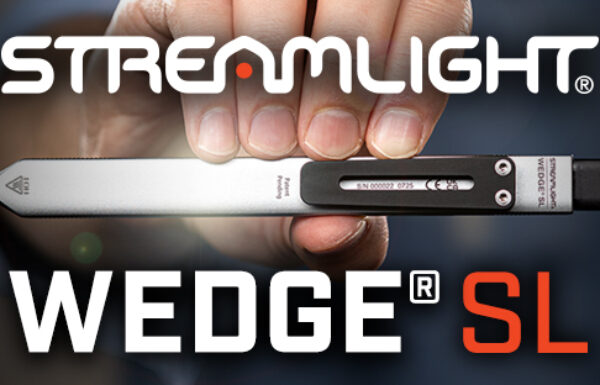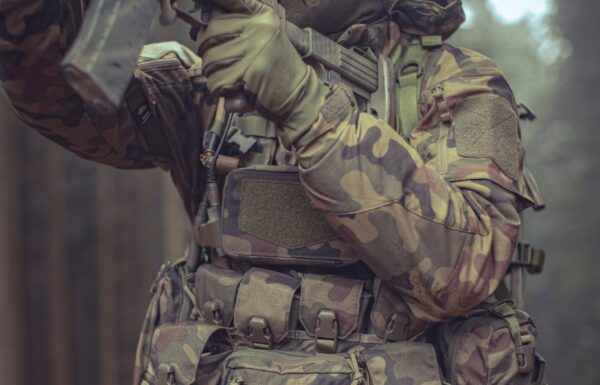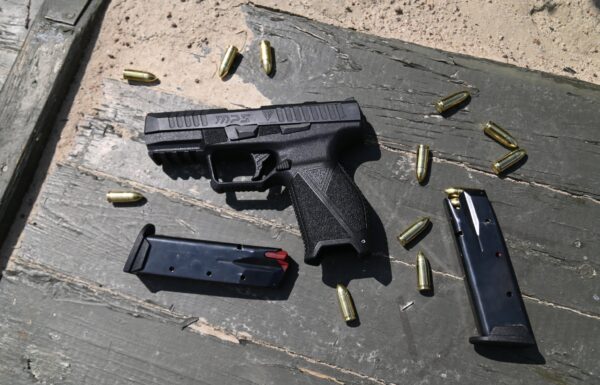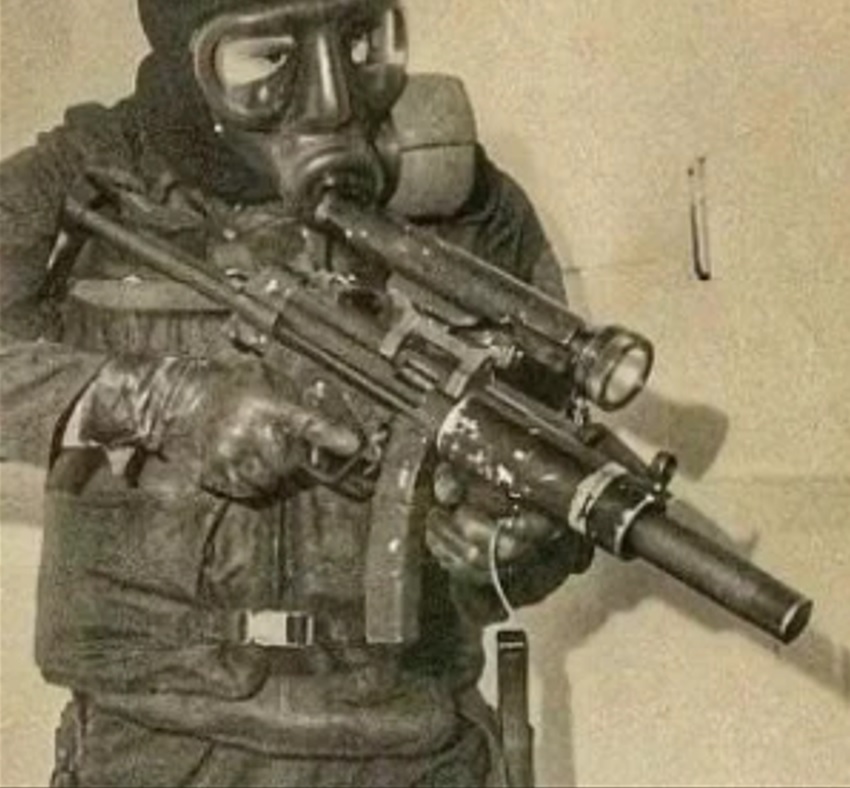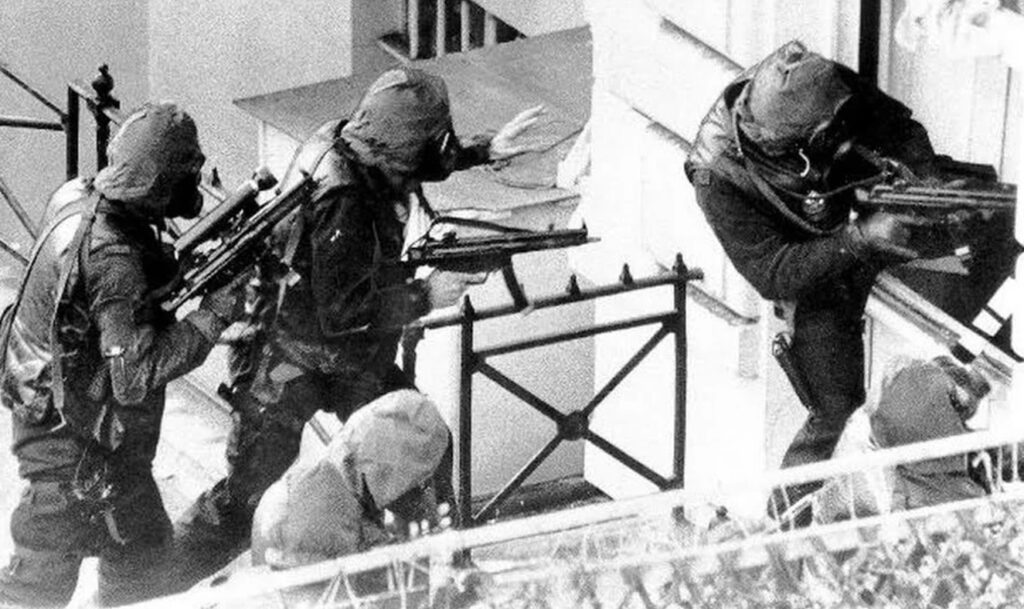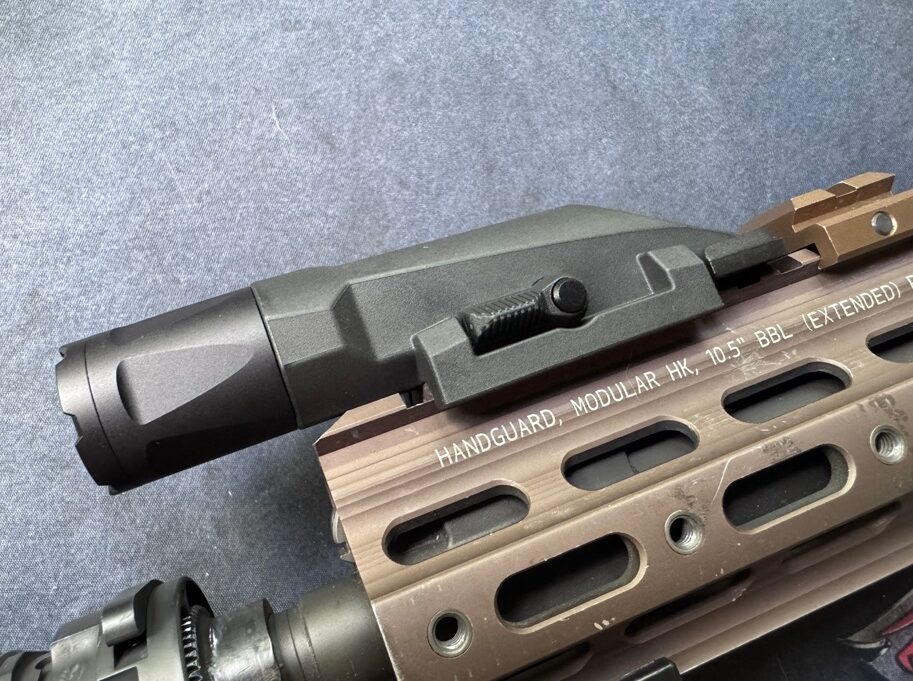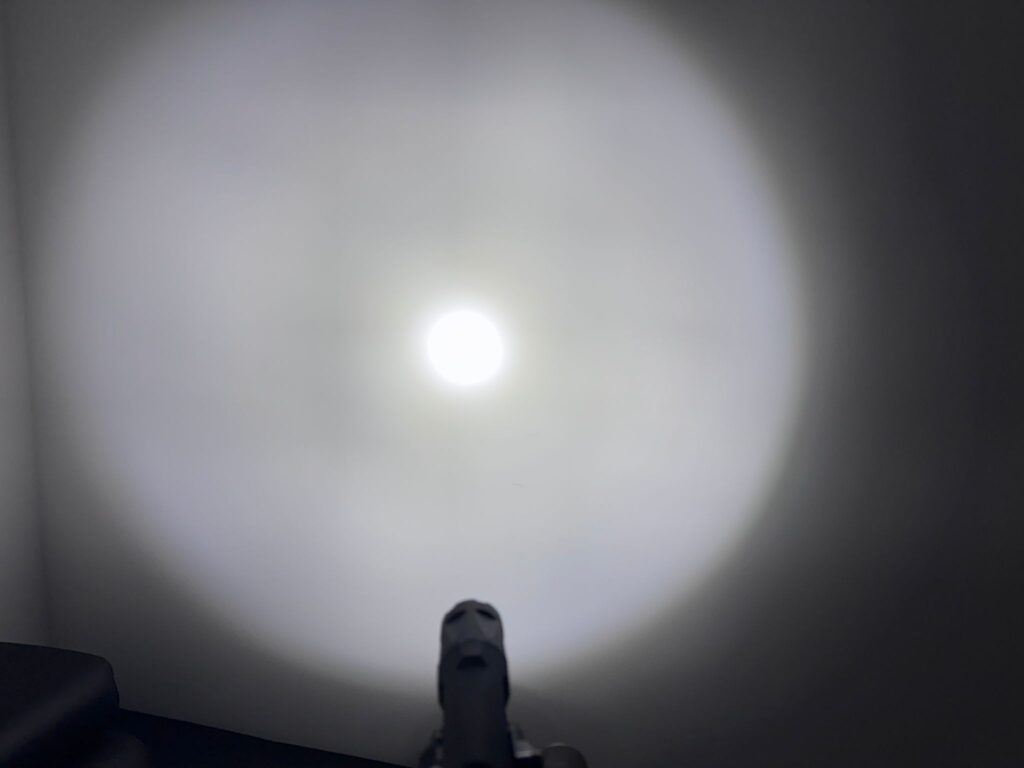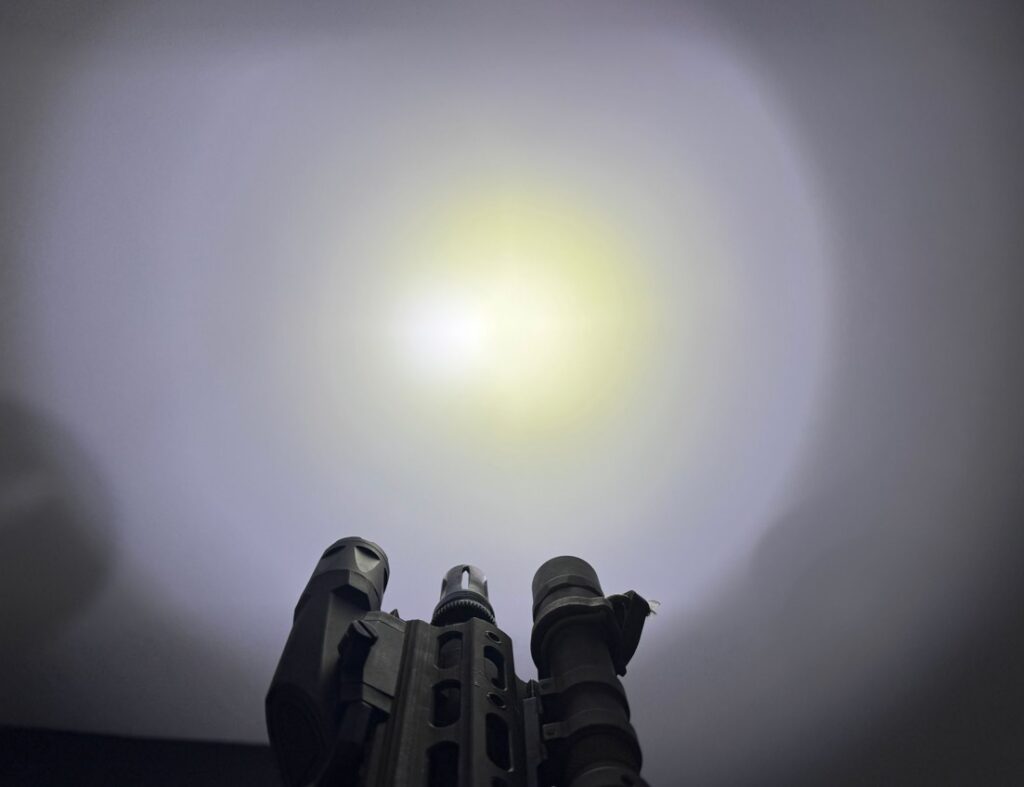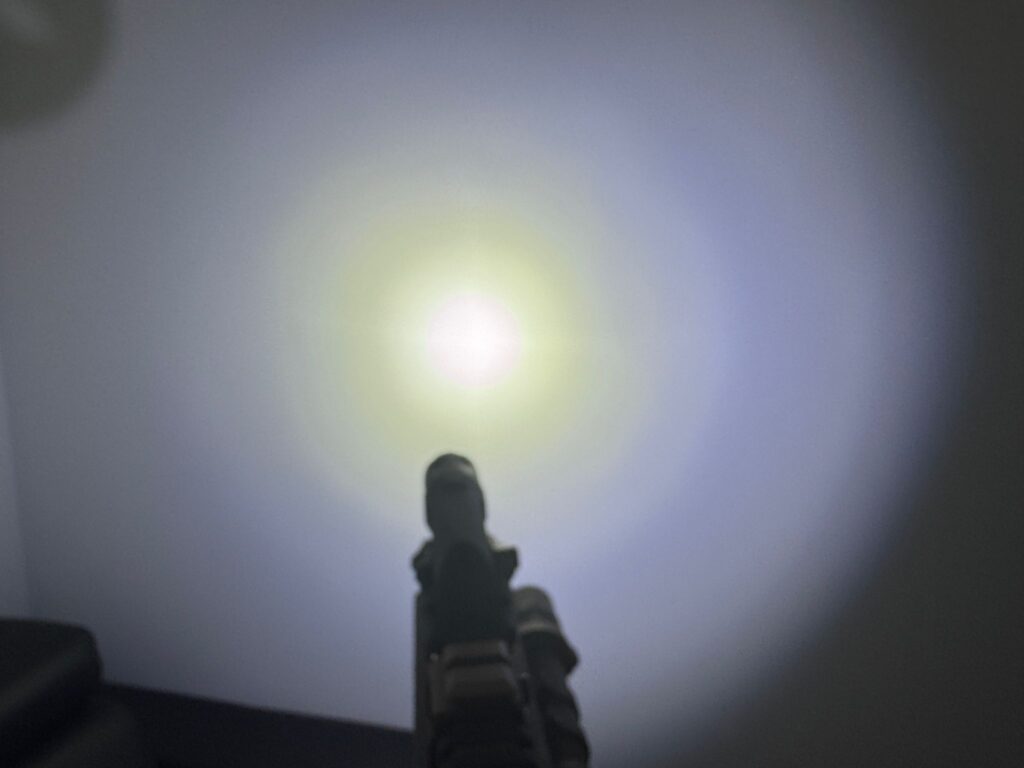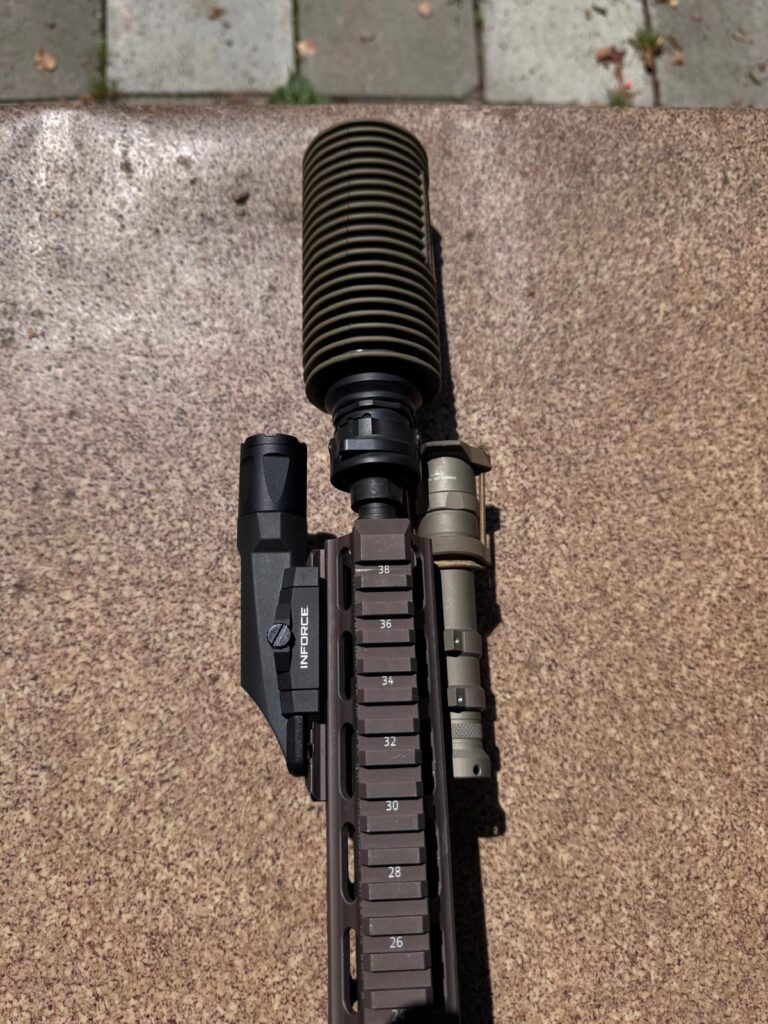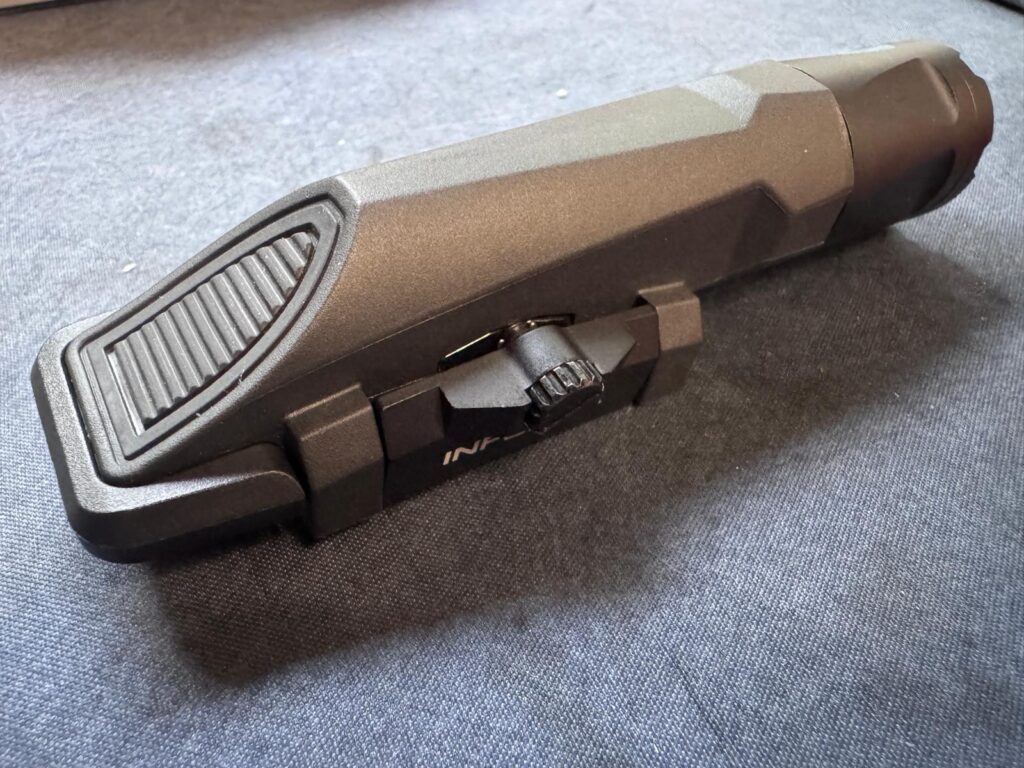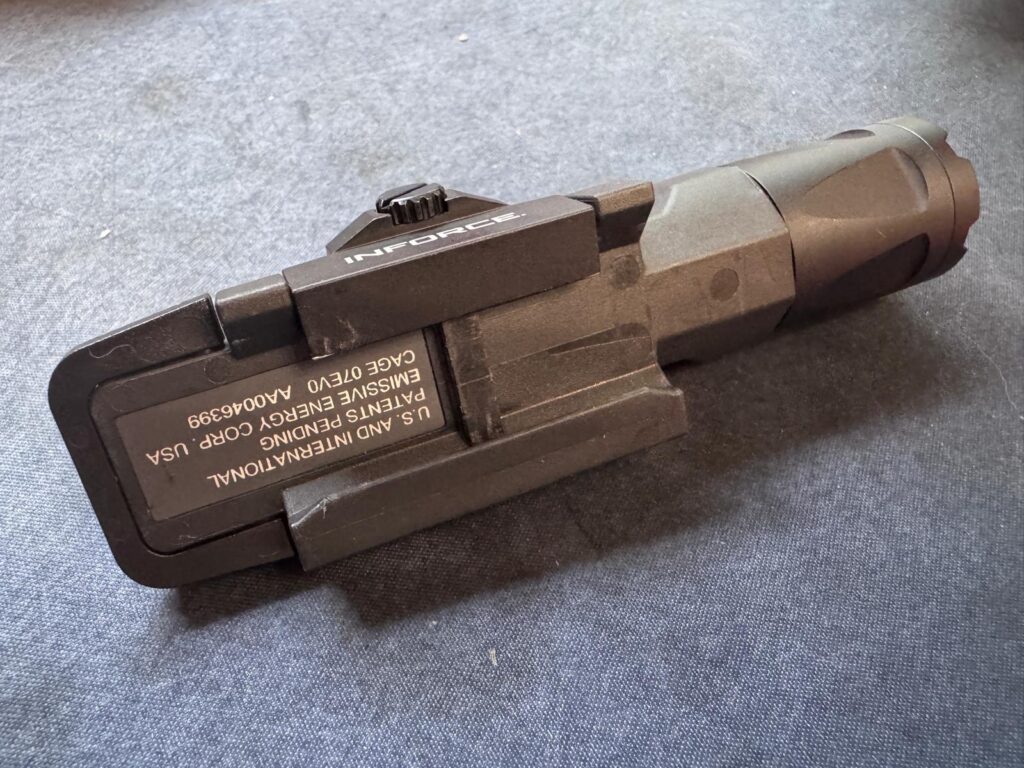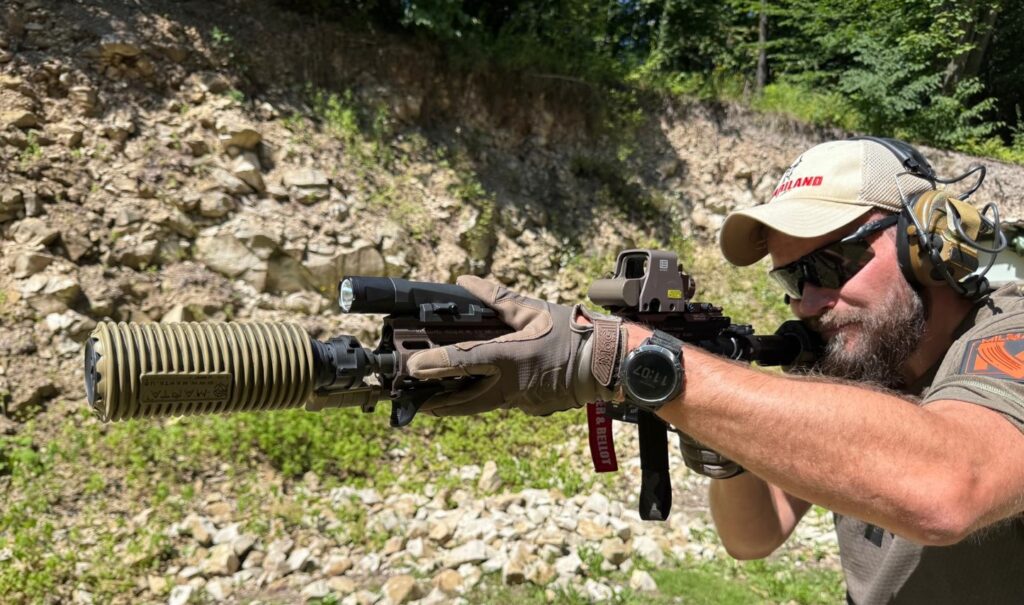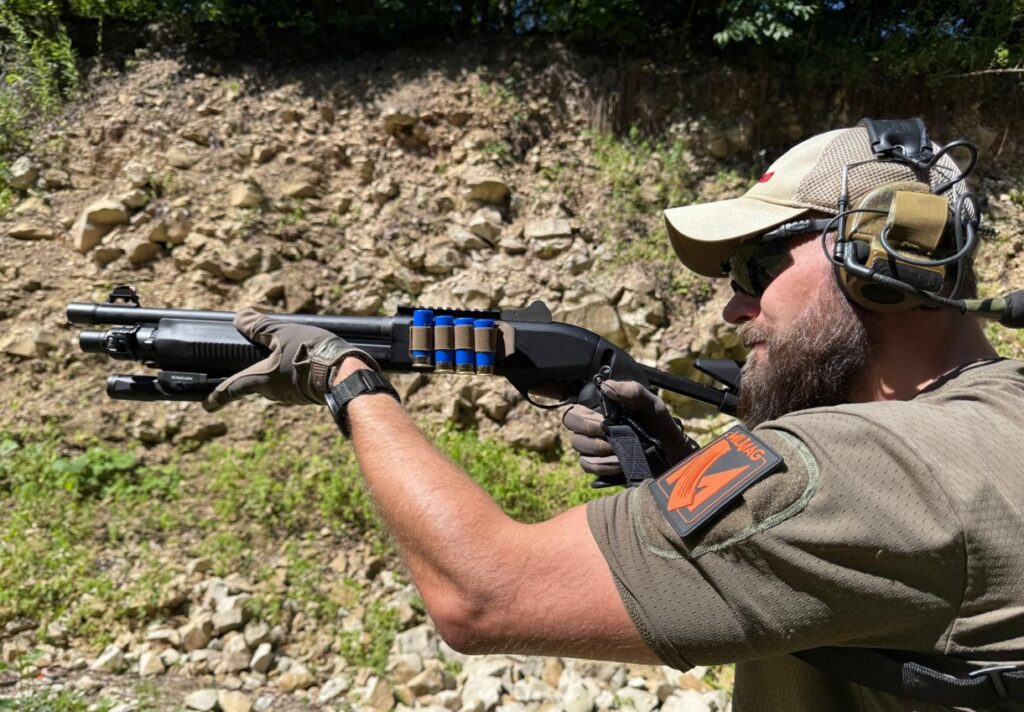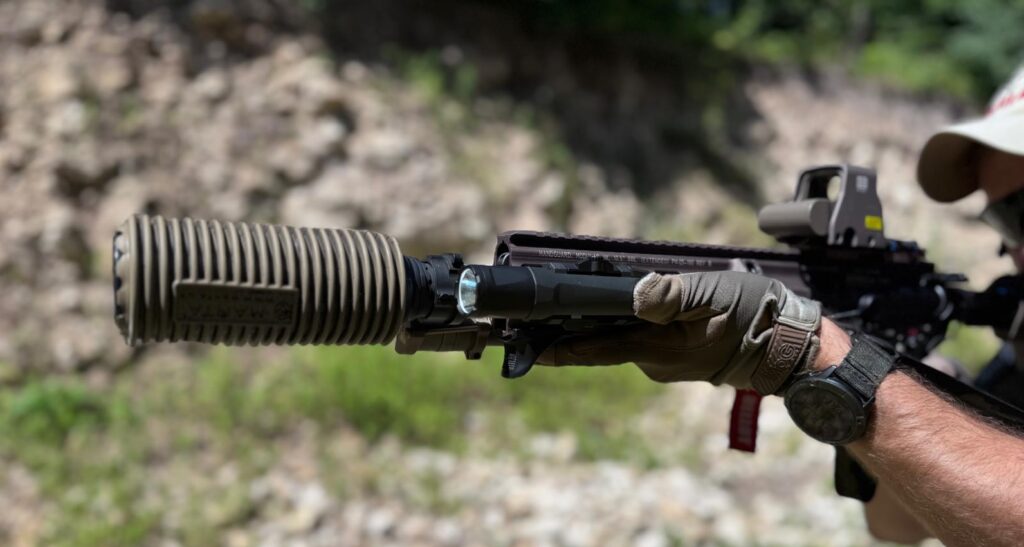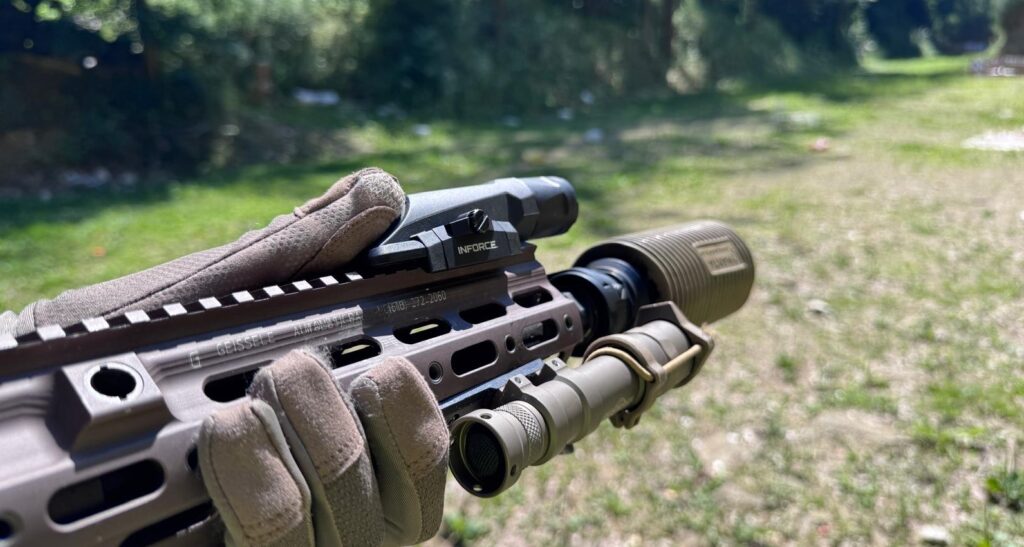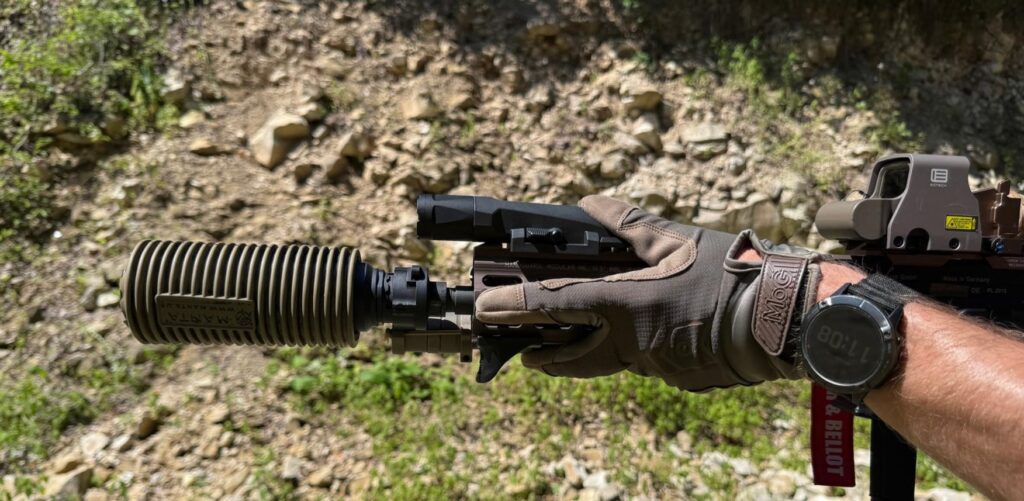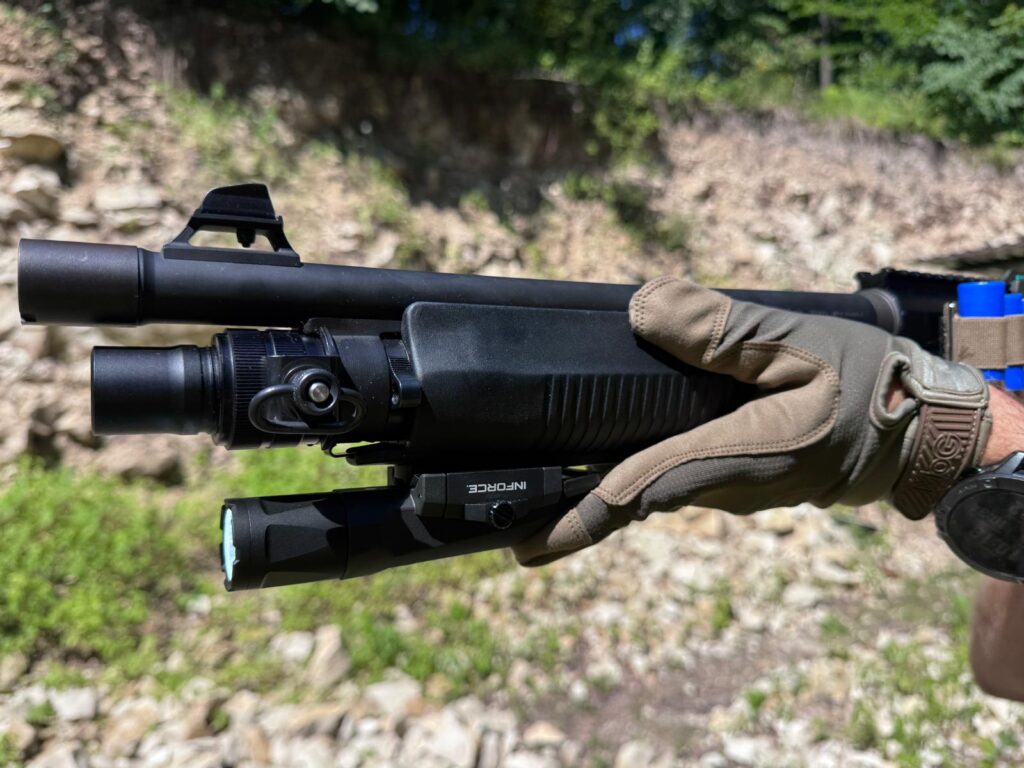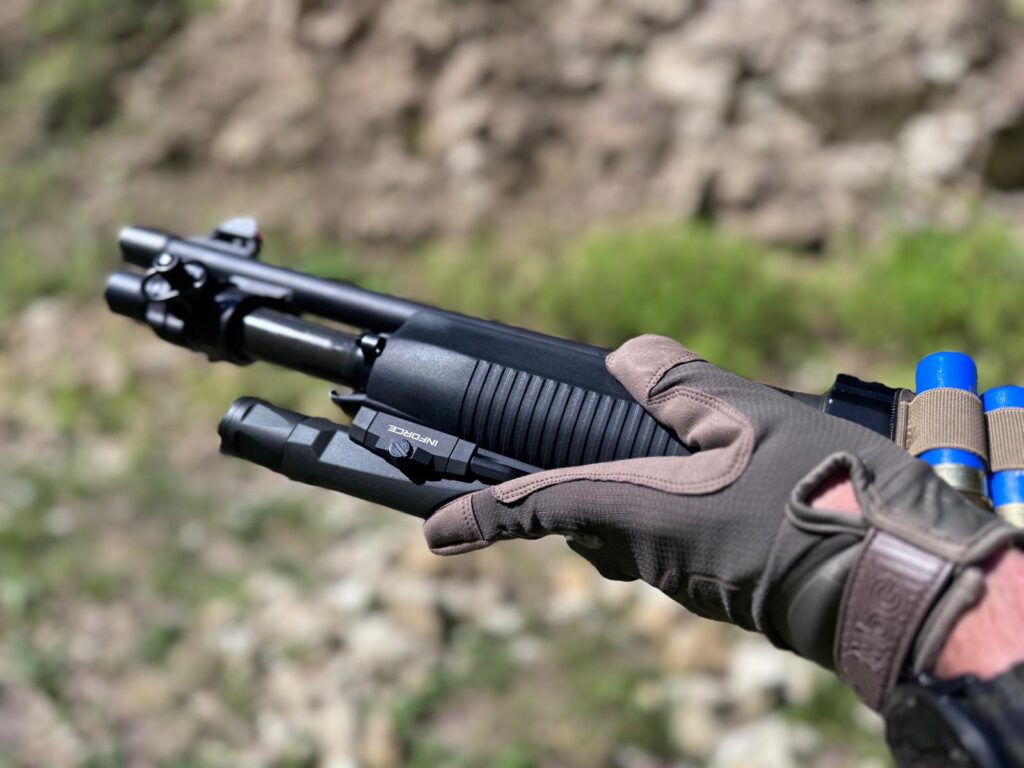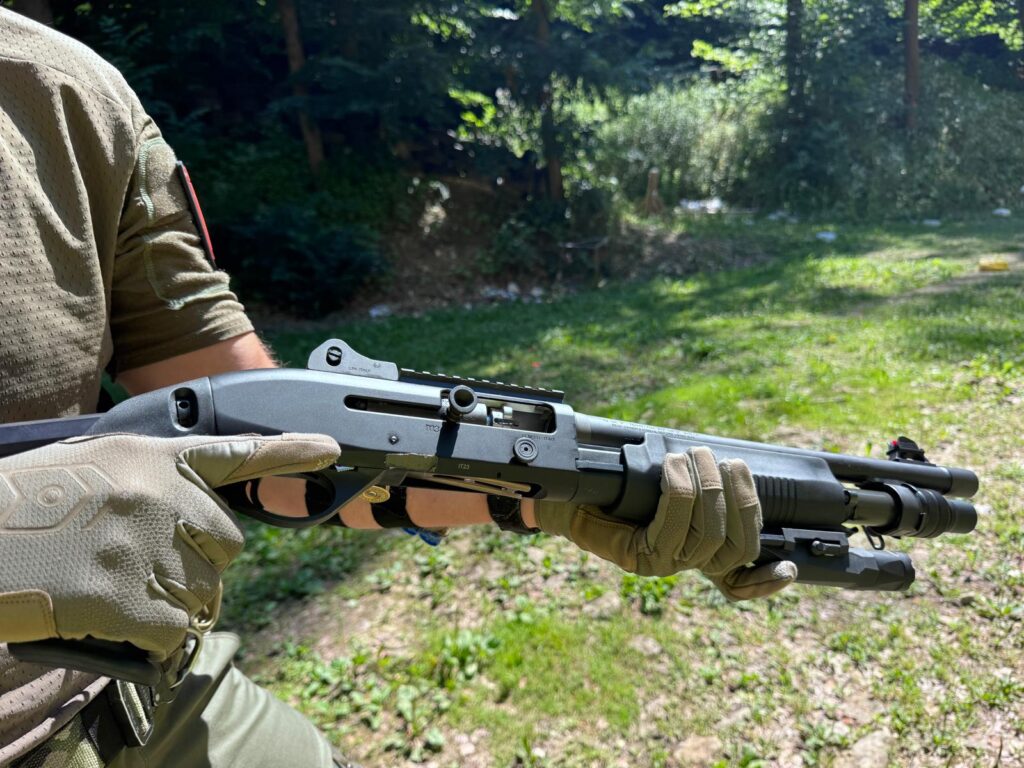The History of Weapon Lights for Long Guns
The concept of a weapon-mounted flashlight dates back to the First and Second World Wars, when handheld flashlights were improvised and attached to long guns. In the postwar years, it wasn’t uncommon to see rifles like the M16 or submachine guns like the MP5 (Operation Nimrod) fitted with large, often unwieldy lighting solutions mounted in various makeshift ways.
A major breakthrough in the development of lighting for long guns occurred with the invention of the pressure switch, which revolutionized the use of flashlights in conjunction with firearms. These switches, often referred to as remote pressure pads or tape switches, allow users to place the activation button anywhere on the rifle, typically along the foregrip. This placement enables more ergonomic and intuitive control, especially in high-stress situations where rapid reaction is critical. A pressure pad switch minimizes movement and noise, as the operator doesn’t need to reposition their hand to activate the light.
Let’s fast-forward a bit in the evolution of tactical lighting. It’s 2008, and Inforce is founded, emerging from another lighting brand, INOVA. Inforce’s primary goal is to produce illumination tools for law enforcement and military professionals. In 2011, the first flashlight in the WML (Weapon-Mounted Light) series was introduced to the market, surprising many with its futuristic design and innovative features. It also responds to the growing late-2000s trend of shooting with the C-clamp technique, where the shooter wraps the support hand around the entire fore-end of the weapon, with the thumb resting along the top, exactly where the WML is designed to mount most effectively.
The design proved to be a success. Its distinctive shape and visual identity were so well received that the Rhode Island–based company went on to release a third generation of the model.
Inforce WMLx Gen. 3 Features
Let’s start with the technical details. The WMLx flashlight weighs 138 grams and measures 13.6 cm in length, which translates to roughly 8 RIS slots on a rail.
Unlike previous-generation models, it is powered by two CR123A batteries, delivering 900 lumens of output (compared to 400 lumens in Gen 2) and a beam intensity of 10,000 candela, which, according to the manufacturer, provides an effective range of up to 200 meters.
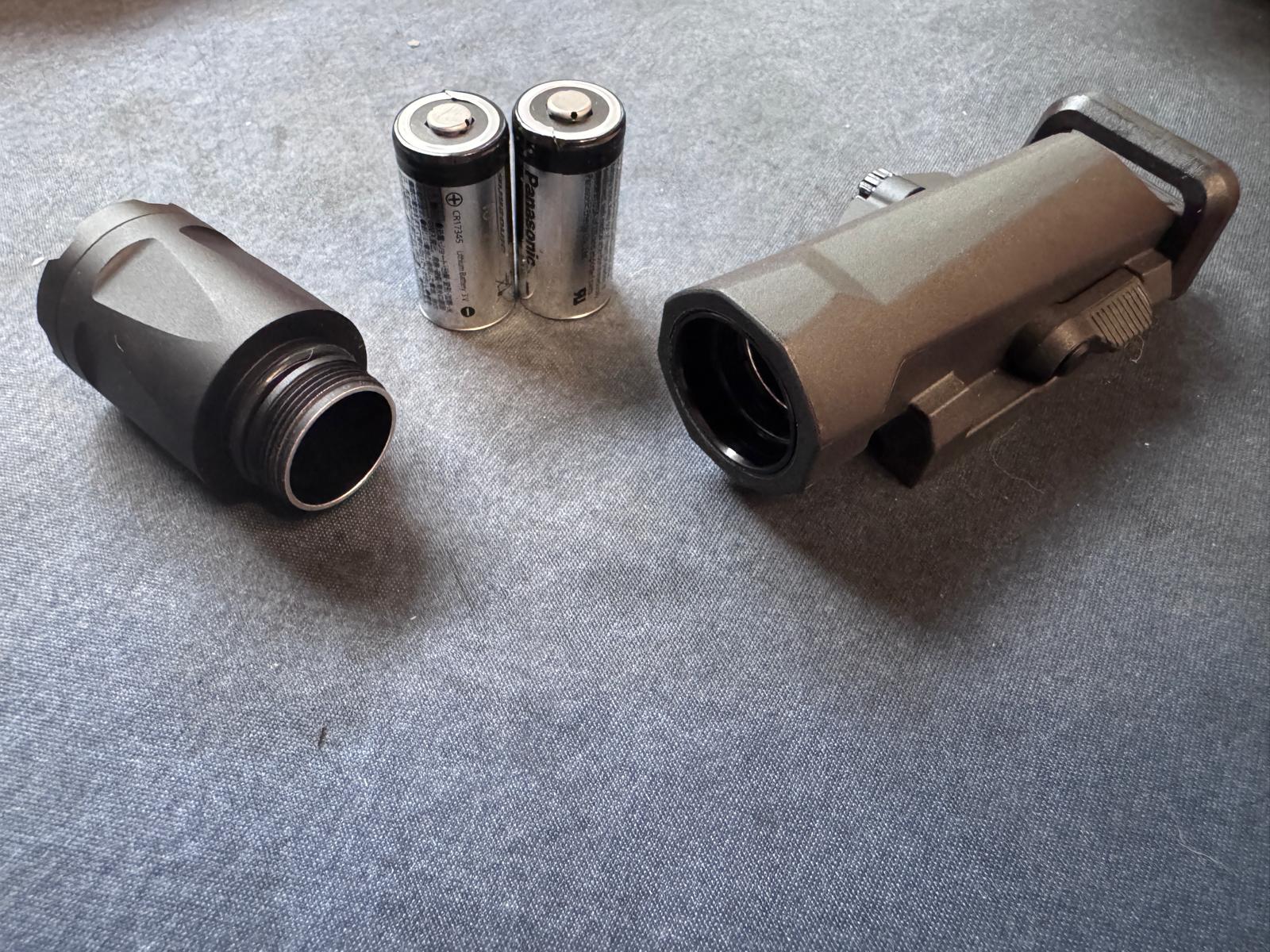
Design and Ergonomics of the Inforce WMLx Gen 3
The flashlight is made of glass-fiber-reinforced nylon, which, according to the manufacturer, is resistant to dirt, sand, and abrasion-related damage. It is waterproof up to a depth of 20 meters. The batteries are installed by unscrewing the head, which is sealed with an O-ring to ensure the claimed level of water resistance.
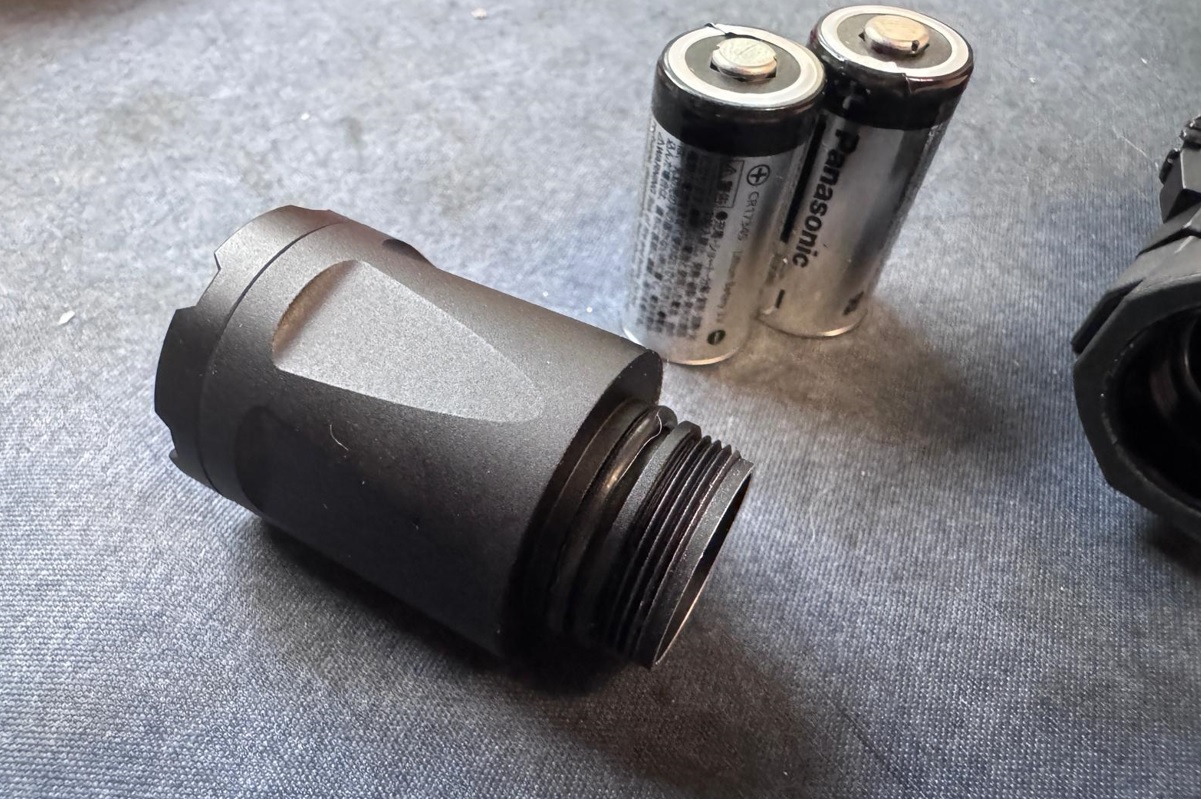
The main light switch is, unsurprisingly, positioned under the thumb. Designed to match the size of the thumb, it features an aggressive texture and a rubberized surface, providing secure and tactile control over light operation. Speaking of controls, the WMLx offers three light modes:
- Constant-on – activated with a quick press of the switch
- Momentary-on – activated by pressing and holding the switch
- Strobe mode – activated by double-tapping the switch
It’s important to note that the side lever on the left side of the flashlight, familiar from previous generations, must be set to position A, indicated by a white marking, which enables white light mode.

The IR light modes are activated in the same way, with the exception of the strobe mode, which is not available in IR.

The flashlight is equipped with a lockout switch to prevent unintentional light activation.

Another safeguard against unintentional activation, this time during transport, is a quarter-turn of the flashlight’s head, which disables the switch and prevents the light from turning on while inside a bag or case.
An interesting feature of the flashlight’s Picatinny rail mount is the use of a spring mechanism that allows the light to quickly “snap” into place on the rail, after which it only needs to be secured with the tightening screw. This design allows the flashlight to hold onto the rail even before the screw is fastened, and it can be removed with a simple pull or secured for continued use by tightening the screw. Clever! We’ll revisit all these features in our upcoming field tests.
Tests
As the name suggests, the WMLx is a flashlight specifically designed for weapon mounting, and it should be regarded as such, unlike other models on the market that can only be used as handheld lights in a pinch.
Having had the opportunity to test its features and ergonomics in real conditions, the Inforce WMLx was mounted and evaluated on an H&K MR223 rifle and a Benelli M3 Tactical shotgun.
The first question we set out to answer after mounting the light on the H&K MR223 was how well it can be positioned for right- or left-handed shooters. For a rifle, three mounting positions on the handguard make the most logical sense: 12, 9, and 3 o’clock.
lacing the flashlight in these positions allows for easy operation using the thumb, as it was designed to be used in this manner. The only drawback of the 12 o’clock position (top rail) is the potential interference with optics mounted behind the light. If the optic sits too low, the flashlight may obstruct part of the sight picture.
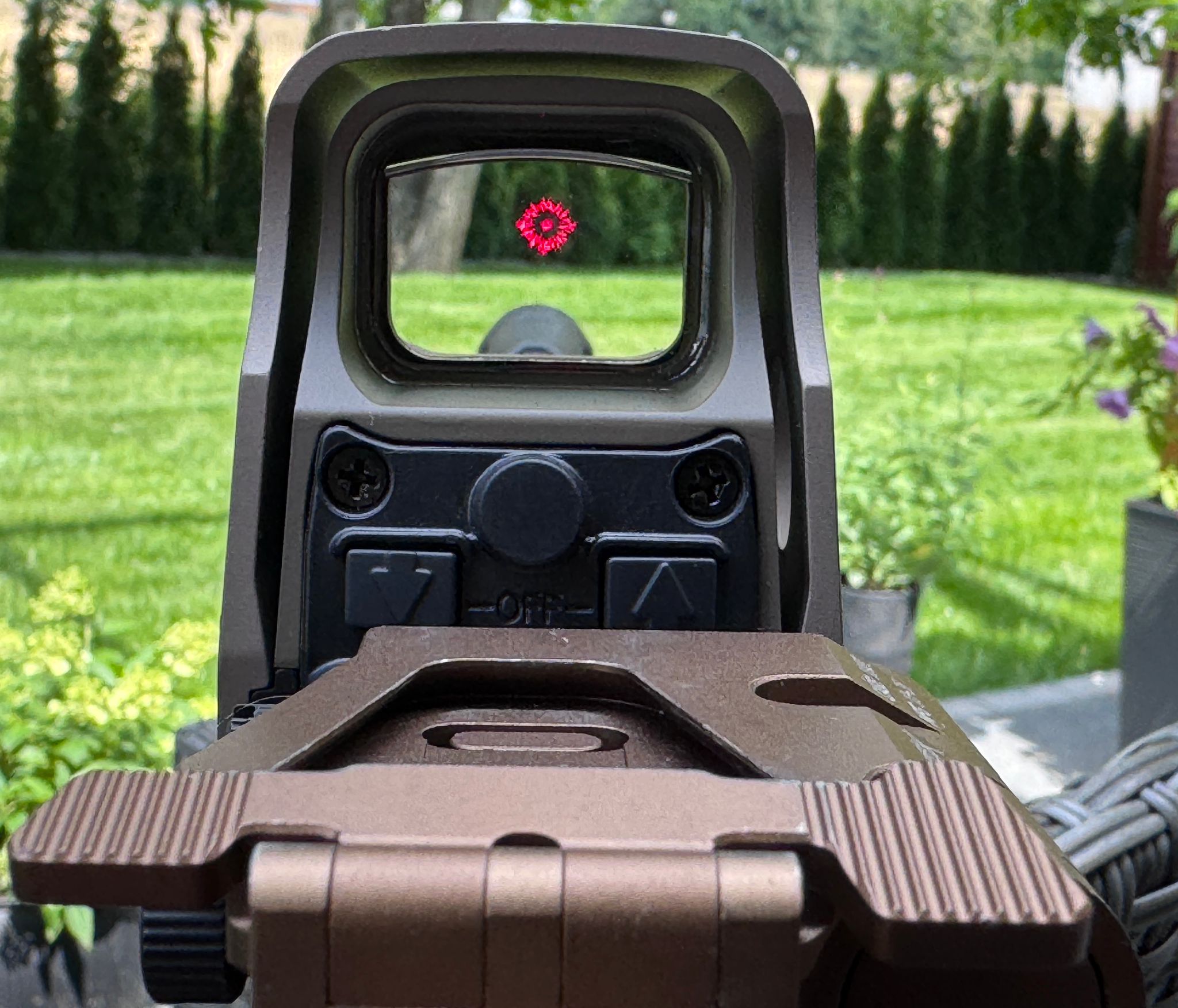
This should be kept in mind when choosing the appropriate mounting height or when opting to place the light on the sides of the weapon.
But what happens when you have to shoot from your support (non-dominant) side? Operating a flashlight mounted at the 12 o’clock position won’t pose an issue. However, if the light is mounted on the opposite side of the weapon from your typical grip, using the WMLx can become more challenging. Activation is still possible, but it won’t be as quick or intuitive as when using your thumb. In that case, you’ll need to use your index finger, more or less searching for the switch by feel—unless you’ve thoroughly trained shooting and light manipulation with your support hand, and your finger “knows where to go.”
Training will likely also be needed for activating or deactivating the lockout lever. While this may become intuitive over time—as the lever is quite tactile and easy to find with the thumb—it can be slightly more challenging to operate while wearing gloves, especially thicker ones. That said, the need to use the lockout in most cases is probably minimal: the activation button doesn’t protrude beyond the flashlight’s housing and has a firm press, meaning the risk of accidental activation is low.
Things are a bit different with the Benelli M3 shotgun, which was also used during the WMLx tests. Due to the limited amount of Picatinny rail space and its placement at the 6 o’clock position, the light can only be mounted underneath. Once installed, it’s hard not to draw comparisons to old-school SWAT shotguns with integrated forend lights. On other shotguns, mounting at the 3 or 9 o’clock positions is likely possible, depending on the rail setup.
Returning to the Benelli M3 and the WMLx, thanks to the shotgun’s two firing modes, we were able to test how the flashlight performs both during semi-automatic fire, where the forend remains stationary, and during pump-action operation, where the light moves with the sliding forend.
Shooting in semi-automatic mode showed that the flashlight fits naturally within the profile of the forend and does not interfere with weapon handling in any way. There was no discomfort or pressure on the support hand, nor any abrasions during use.
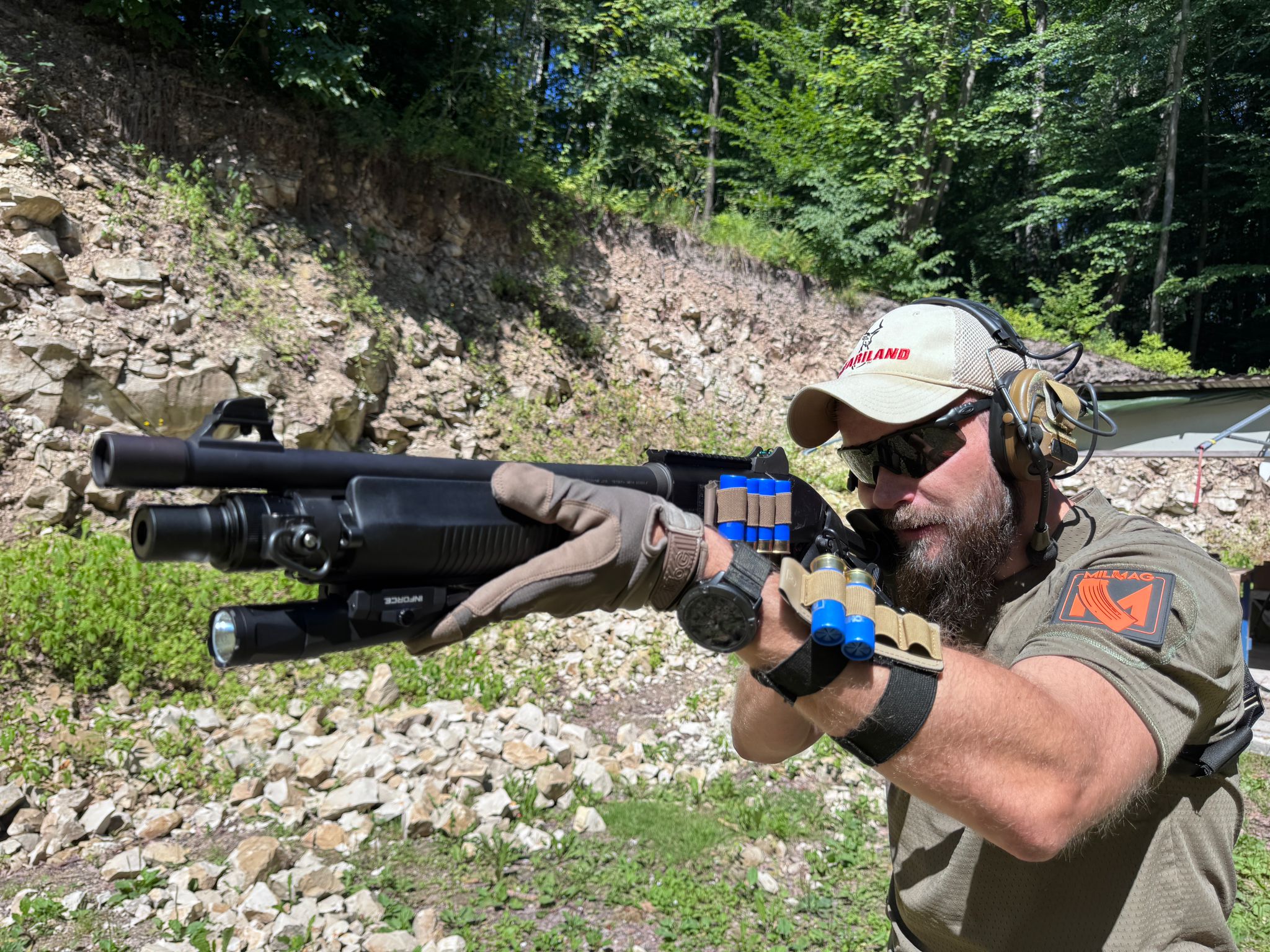
So, how did the Inforce WMLx perform in pump-action mode? The conclusions were very similar to those from semi-auto operation: no discomfort, no interference. In fact, when mounted in this position, the WMLx actually serves as a support point for the hand, allowing for more controlled and confident movement of the shotgun’s forend.
Of course, due to the design characteristics of both the flashlight and the shotgun, activating the light isn’t particularly quick and requires training and muscle memory to locate the switch by feel.
During testing, despite the significant recoil, the flashlight held securely on the rail — no loosening was observed, even after multiple rounds were fired.
Summary
Pros
One of the clear advantages of the Inforce WMLx flashlight is its low weight, thanks to its polymer construction. At 138 grams, it feels noticeably lighter than the SureFire Scout 600, which is usually mounted on our test H&K MR223 rifle.
Another major benefit is the integrated switch, which eliminates the need for external cables and pressure pads. This not only reduces the risk of snagging on gear but also cuts down on potential costs, as many competing models do not include such accessories out of the box.
The thumb-activated switch, positioned at an ergonomic angle, makes light activation intuitive. The remaining controls, the lockout lever and the white light/IR mode selector, are also easy to operate with sufficient practice, thanks to their clearly defined and tactile design.
Its streamlined, self-contained construction, with no protruding parts or external wires, further reduces the risk of entanglement with other gear.
A notable feature is the tool-free mounting system. The spring-loaded clamp and textured mounting screw enable the light to be securely attached with just finger pressure. As a result, repositioning the WMLx on the same weapon or moving it to a different platform is effortless. Lastly, the battery life is impressive: 2 hours of runtime on just two CR123A batteries is a very solid result.
Cons
Of course, the design has its downsides. Due to the fixed position of the integrated switch and the lack of support for remote cable switches, the light, in our subjective opinion, can only realistically be mounted in two positions: at 12 o’clock (top rail) or, depending on the shooter’s handedness, at 3 or 9 o’clock. There is no option to relocate the switch to a different area of the weapon than what the design allows.
Another limitation is the size of the unit and its mounting footprint — the WMLx requires eight RIS slots. This may disqualify it as a viable option for more compact weapon platforms, such as submachine guns or carbines with short handguards.
The polymer construction might also fail to impress traditionalists or hardcore users loyal to the rugged aluminum builds of brands like SureFire. Additionally, the lockout lever feels somewhat delicate and slightly unstable. It’s easy to lift into position, but just as easy to accidentally move out of it, which somewhat undermines its role as a reliable safeguard against unintentional light activation.
Author's conclusion
As a long-time user of flashlights from the SureFire stable, I was initially a bit skeptical about the Inforce design. Sure, I was aware of the existence of this type of light; I’d occasionally seen one mounted on soldiers’ or law enforcement officers’ weapons. But after several weeks of testing, I found myself more open to alternatives beyond the classic Scout. In fact, I now can’t imagine a better fit for my Benelli than the WMLx. Why? Primarily because of that slick “look” — and we all know the saying: “If you look good, you shoot good”. Additionally, thumb activation quickly became second nature, and the flashlight’s lightweight design didn’t negatively impact weapon handling. On the HK MR223, the 12 o’clock position turned out to be the most interesting option, as it kept the weapon’s profile compact. However, with the optic I use, the flashlight’s outline slightly encroached on the sight picture.
Will I swap out my Scout for the Inforce WMLx? On the rifle, the Scout will probably stay, but for the M3? Honestly, I don’t think I’ll find a better option.
The editorial team at MILMAG would like to thank Wojciech Mielniczenko, president of the TG Sokół shooting club in Lublin, for providing access to the shooting range in Urzędów for the photo session and flashlight testing.
Special thanks to Hubertus Pro Hunting for providing the Inforce WMLx Gen 3 flashlight for testing. The flashlight is available for purchase for 1,100 PLN.
Sponsored Content


















